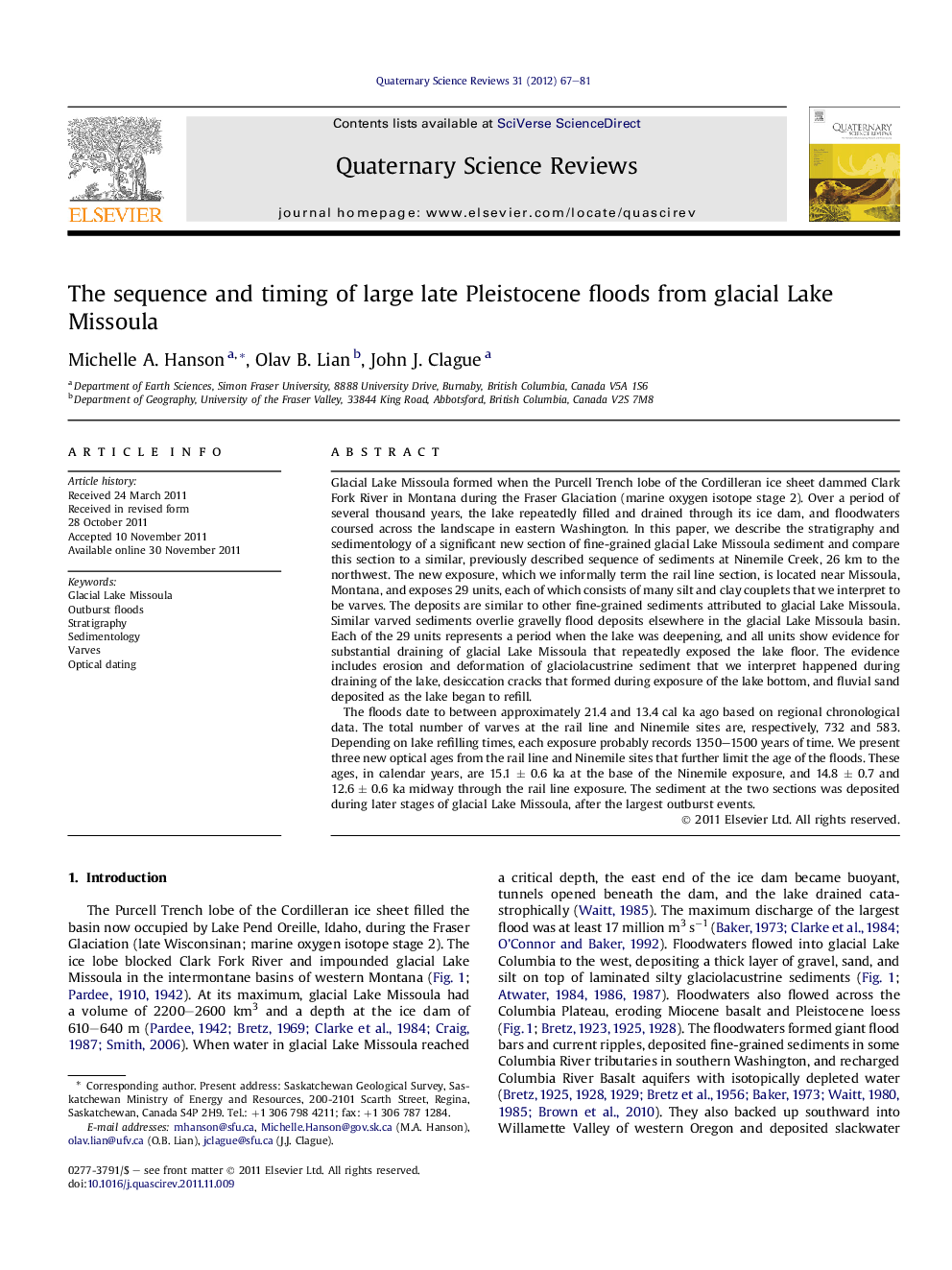| کد مقاله | کد نشریه | سال انتشار | مقاله انگلیسی | نسخه تمام متن |
|---|---|---|---|---|
| 4735507 | 1640903 | 2012 | 15 صفحه PDF | دانلود رایگان |

Glacial Lake Missoula formed when the Purcell Trench lobe of the Cordilleran ice sheet dammed Clark Fork River in Montana during the Fraser Glaciation (marine oxygen isotope stage 2). Over a period of several thousand years, the lake repeatedly filled and drained through its ice dam, and floodwaters coursed across the landscape in eastern Washington. In this paper, we describe the stratigraphy and sedimentology of a significant new section of fine-grained glacial Lake Missoula sediment and compare this section to a similar, previously described sequence of sediments at Ninemile Creek, 26 km to the northwest. The new exposure, which we informally term the rail line section, is located near Missoula, Montana, and exposes 29 units, each of which consists of many silt and clay couplets that we interpret to be varves. The deposits are similar to other fine-grained sediments attributed to glacial Lake Missoula. Similar varved sediments overlie gravelly flood deposits elsewhere in the glacial Lake Missoula basin. Each of the 29 units represents a period when the lake was deepening, and all units show evidence for substantial draining of glacial Lake Missoula that repeatedly exposed the lake floor. The evidence includes erosion and deformation of glaciolacustrine sediment that we interpret happened during draining of the lake, desiccation cracks that formed during exposure of the lake bottom, and fluvial sand deposited as the lake began to refill.The floods date to between approximately 21.4 and 13.4 cal ka ago based on regional chronological data. The total number of varves at the rail line and Ninemile sites are, respectively, 732 and 583. Depending on lake refilling times, each exposure probably records 1350–1500 years of time. We present three new optical ages from the rail line and Ninemile sites that further limit the age of the floods. These ages, in calendar years, are 15.1 ± 0.6 ka at the base of the Ninemile exposure, and 14.8 ± 0.7 and 12.6 ± 0.6 ka midway through the rail line exposure. The sediment at the two sections was deposited during later stages of glacial Lake Missoula, after the largest outburst events.
► Glacial Lake Missoula was a late Pleistocene self-dumping ice-dammed lake.
► A newly studied exposure contains 29 varved units representing ∼1350 years.
► Each fine-grained unit records evidence of a lake draining event.
► Three new optical ages constrain the timing of these glacial outburst floods.
► Exposures of fine-grained sediment are constrained to later stages of the lake.
Journal: Quaternary Science Reviews - Volume 31, 12 January 2012, Pages 67–81